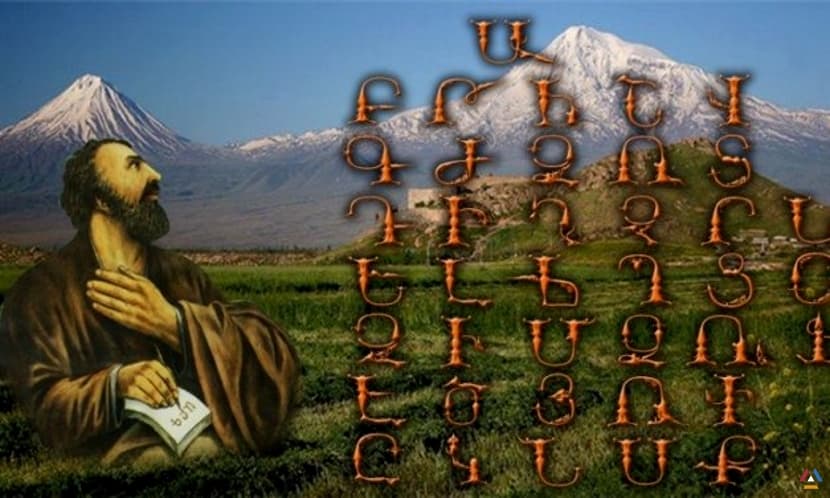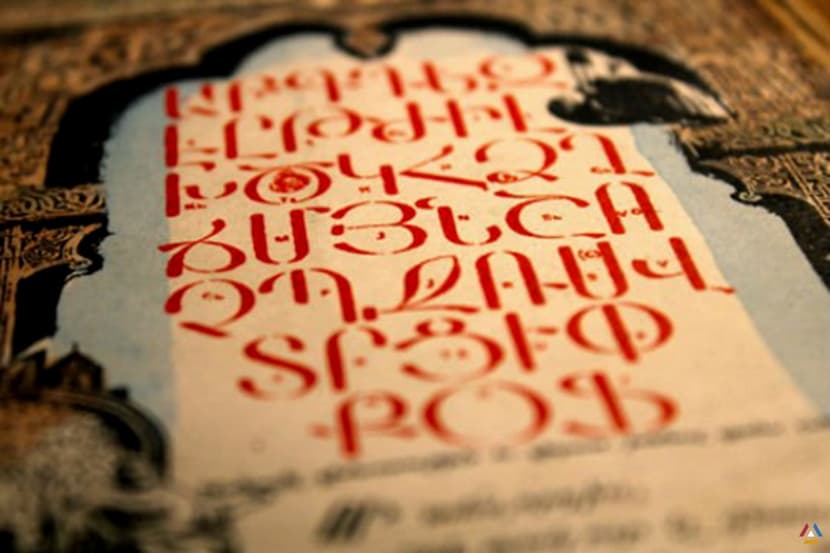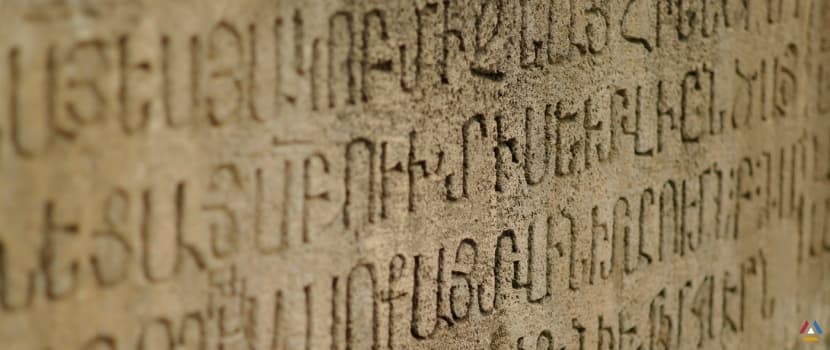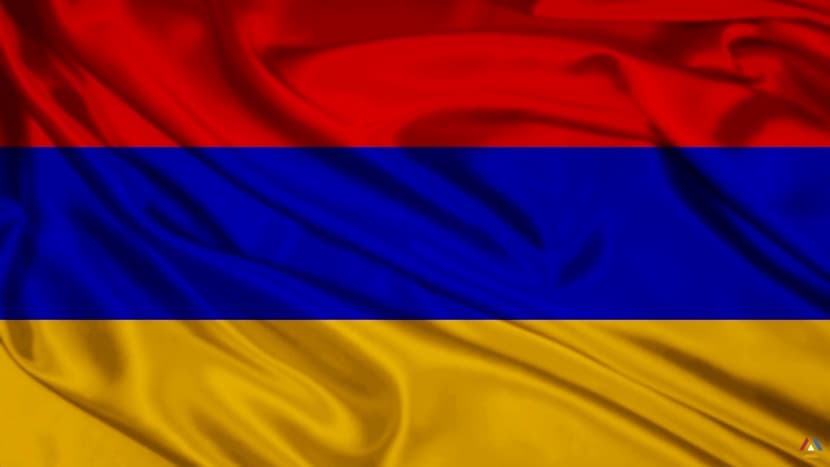
The history and features of the Armenian language

The history and features of the Armenian language
Even now, after numerous studies, the Armenian language, like the origin of the Armenians, raises many questions and disputes, and its history still stays the subject of the discussion of scientists and linguists. An interesting fact is that the Armenian language could not be attributed to any language group, since according to the generally accepted classification it did not have any language “relatives” in the Indo-European family to which it belongs. Therefore, it was allocated to an individual Armenian group due to the virtue of its peculiarity. Now about 10 million people all over the world are talking and singing songs in Armenian.
The Armenian language can be heard not only in Armenia and Nagorno-Karabakh, where it is the state language, but also in Russia, Georgia, the United States, and many other states, including the CIS. A fairly wide coverage of countries is due to the increased interest in the Armenian language and the desire to learn it in order to be able to freely communicate with friends, relatives and acquaintances who are its native speakers, read books and poems, watch films in Armenian.
About 3.5 million Armenians live in Armenia, over 160 thousand in Nagorno-Karabakh, about 2 million in the Russian Federation, at least 1 million in America, and about 400 thousand in Georgia. Countries such as France, Lebanon, Iran, Syria, Australia, Argentina and many others are also known for their large communities of Armenians. It is not surprising that with such a worldwide spread, the Armenian language has increased attention and many people, due to their profession, interests or for other reasons, begin to study it.
A lot of literary memos in which you can mark lots of interesting facts from the history of different peoples of the world, from biology and chemistry, from medicine and astronomy, from grammar and other sciences, is written in Armenian. And the cinema of Armenia gives pleasure to the fans of series of various genres with new, exciting films. And this becomes one more reason to start learning
a language whose history is full of mysteries and interesting moments.
History of the Armenian language

It is noteworthy that among all the ancient languages that have received the status of "dead" only the ancient Armenian has survived in our time. Thus, books or manuscripts written on it are easy to read with knowledge of the modern language. And this is despite the fact that several stages of development passed through several millennia of its existence before the acquisition of the modern look by the Armenian language.
Experts think that the history of the Armenian language has about 5 thousand years old. The countdown begins from the moment when the final formation of the so-called Armenian proto-language took place in the 3rd millennium BC.
How old is the Armenian language is evidenced by references to it, found in sources left by many ancient civilizations. So back in the 14-13th century BC, cuneiform inscriptions tell about a country that we now know as Armenia, and the people living in it, speaking their own language.
But, despite such a long history, Armenian writing, like the letters of the Armenian language, appeared only at the beginning of the 5th century AD. Until that time Aramaic and Greek scripts were used in ancient Armenia, which were also used to write Armenian texts. There was also a period when the Persian language was used in this country, including for maintaining official documents and writing manuscripts. The Persian language was especially relevant during the reign of the Arshakids, whose dynasty was closely related to the kings of Persia.
The influence of Christianity on the emergence of Armenian writing

The Armenian language had neither a letter nor an alphabet for a long time. The impetus for their appearance was the adoption of Christianity in 301. Of all the countries of the world, it was Armenia which first adopted the Christianity as the state religion. But spreading a new religion was not so easy, so the process of turning Armenia into a Christian country was delayed. One of the main reasons for this delay was the fact that the Bible was written in Syriac or Greek, because of which it was not accessible and understood by a large number of Armenian people. During the period of the spread of Christianity there was an urgent need for the creation of the Armenian writing and for the translation of the Bible into Armenian.
The 405 year was significant for the Armenian language, when Mesrop Mashtots created the alphabet, and on its basis, the Armenian script. It is noteworthy that it was and remains a special alphabet, not similar to any of the known in our time. Its peculiarity is also due to the fact that it is inherent in some nuances of the alphabets of other ancient countries, including Egypt, Greece and Persia.
Finally, due to the adoption of Christianity and the painstaking work of Mesrop Mashtots, the Armenian language got its alphabet and its writing. First of all, the Bible was translated into Armenian, which made it possible to conduct services in churches in an understandable and native language for Armenians. The Christianity began to be perceived consciously and spread much faster, and the creation of the alphabet contributed to the fact that the Armenian language began to develop actively and it began to be recognized throughout the world.
With the advent of the alphabet, the Armenian literature began to develop actively. Already in the first half of the 5th century more than 40 works in Armenian appeared. They also began to translate intensively into Armenian 5 works written earlier in other languages. It is interesting that due to the Armenian language, namely the translation into it the works of many ancient authors whose originals were lost has been preserved to our days. One of the world's largest storage of written memorials of antiquity is located in Yerevan, in which more than 120 thousand manuscripts in Armenian are stored.
Interesting features of the Armenian language

One of the features of the Armenian language is that you can find many words from other languages, which is due to the centuries-old history of Armenia and the historical events occurring in it.
So Persian rule, which lasted in Armenia for several centuries, brought a lot of Persian words to the language. Together with Christianity, the Syriac and Greek words fell into the Armenian language. During the time when Armenia was part of the Ottoman Empire, many Turkish words fell into its vocabulary. And from the era of the Crusades, the Armenian language got French words and expressions. There are vocabulary borrowings from many other languages in the Armenian language. Moreover, all borrowed words were mastered by the Armenian language so firmly and thoroughly that it is even impossible to distinguish them from true Armenian words. It is not surprising that such a multifaceted, unlike the others, special language did not succumb to any group classification and received its individual Armenian group in an Indo-European family.
An interesting feature of the Armenian language is that in it, as in English, there is no grammatical gender and “he, she, it” are expressed in one word. The grammar system of the Armenian language is characterized by several types of nominal inflection, has 7 cases, 2 numbers, 9 tenses and 4 types of conjugation. It is also worth noting the richness of the vocabulary of the Armenian language, as it has 11 thousand roots, with approximately 900 of them from Indo-European languages. In general, it can be noted that the Armenian language reflects the various stages of development of many other languages of the Indo-European family.
The main periods of the history of the development of the Armenian language
The centuries-old history of the Armenian language is divided into several main stages
1. The first stage of development begins from the time when the alphabet and the Armenian script were created and lasts until the 10th century. This is the period of the ancient Armenian literary language or ‘’grabar’’, which by its structural features is similar to many ancient languages of the Indo-European family.
2. The second stage in the development of the Armenian language is considered to be the period from the 10th century to the 16th century, which begins with the advent of the Middle Armenian language. At that time, the spoken ancient Armenian language came out of widespread use, but it is still the cult language of the church.
3. In the 16th century, the next stage begins. The New Armenian language appears and begins to develop rapidly. In the same period, printing of books began to develop in Armenia. It began with the publication of the book “Urbatagirk” in Armenian in 1512 by Hakob Megapart.
4. Since the 50s of the 19th century, on the basis of the New Armenian language, the development of the Armenian national literary language begins.
Despite the changes that took place over the course of dozens of centuries, the ancient Armenian language did not become “dead”, like many other ancient languages. It does not differ from the modern language radically, which allows scientists to read and study ancient manuscripts with little effort, in huge numbers which have survived to our days. And not only specialists, but also those who know well, study the Armenian language, will be able to open the veil of antiquity and look into the past not only of Armenia, but also of many other countries of the world with the help of the old manuscripts which they can even read on their own.
The authors of written memos in Armenian were able to embrace history of the world so widely that we can get a lot of detailed and interesting information about different countries from the manuscripts they left. And also about how life, traditions, customs and in general the history of the people living in the Middle East, in Russia, the Caucasus, Central Asia, India and in many other countries, even on the African continent. And the similarity of the modern language with the ancient allows us to solve that problem successfully.
Two branches of the Armenian language

Now there are two directions of the Armenian literary language - Western Armenian and Eastern Armenian, between which there are some differences. But the differences in these two branches are so insignificant that the speakers of these two literary languages can easily communicate and understand each other. Anyway, any person who knows the Armenian language will be able to understand both of these areas. As for the East Armenian language, it is mainly used by Armenians living in Armenia, India, Iran and the CIS countries. The Armenians living in other countries of the world use the Western Armenian language.
So, the main distinguishing feature between these two directions was that the East Armenian literary language began to play the role of the state language from the 20s of the last century. Therefore, it has official status, is used in science and literature, in culture, in education, in the media and other spheres of life. It is a multifunctional and the most used language in which all laws and documents are issued.
The Western Armenian direction, due to the specifics of its development, has limited application; it does not have official status even in those states where it has a major distribution. The main task of the Western version is to preserve the national cultural heritage, traditions and history. In addition to the main directions, the Armenian language has several dozen dialects spoken by representatives of Armenian communities in different countries.
The interest in learning the Armenian
Many linguists and scientists are sure that the history of this amazing language has not been studied to the least, and it is still full of mysteries and secrets. And while they rack their brains and discuss about this, more and more people all over the world, including in Russia, are learning the Armenian language online or in specialized schools. Armenians are considered to be one of the oldest peoples in the world, and their origin still, after many decades of research, is debated by prominent world-class scientists. According to many experts, a close study of the Armenian language will help to solve the riddle about where the Armenians came from and who were their ancestors. But not only linguists, historians and scientists are interested in the Armenian language. It is true, that ordinary people do not study its history thoroughly, but they do it with interest, preferring from other foreign languages. Although there are many students who are interested in everything related to the Armenian language. And there is a separate category of people who are passionate about it and hope to make a discovery in the history of both the Armenia and people, and their language.
Learning a language that has an ancient history which is unique in its kind makes a great interest at the world level; it is taught in different countries in many language educational institutions among the other foreign languages. Many people want to communicate easily with its carriers, with relatives, loved ones, relatives or just familiar people. Someone wants to sing beautiful, melodic songs, read stories or poems in Armenian. Also, a huge number of fans have Armenian TV shows, which wants to watch in Russian not everyone. There are people who want to learn Armenian in order to enjoy watching their favorite films without translation. At the same time, watching Armenian TV series online, you can even better learn the language, understand its features and uniqueness.
1
13:39 08-05-2020






 Հայերեն
Հայերեն  Русский
Русский
Dear visitor, if you have a minute please leave your comment about the film or series. Thank you.